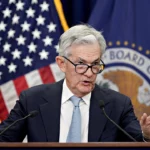
On Wednesday evening, the EIA Crude Oil Inventories was released, showing a build of 522,000 barrels, putting the total inventory at 448.5 million. This is much lower than the forecasted increase of 971,000 barrels and the previous month’s build of 8.4 million barrels.
Despite a lower-than-expected figure for U.S. oil inventories, which is bullish for prices, crude traded flat before edging up after the news, with Brent up 0.17% at $86.12 and WTI up 0.44% at $80.50.
Post-Market
With a looming recession backdropping the still-ongoing war in Ukraine, markets now have to make a decision on whether supply tightness or demand destruction will prevail – and the resulting direction crude oil will take in the first half of 2023.
Supporting, or at least stabilising the supply side, the news that OPEC and OPEC+ are unlikely to change their policy at their Feb 1 meeting, according to sources from OPEC+. However, the second round of EU sanctions on Russia will take effect on Feb 5, a move that has seen a pre-emptive surge in diesel and fuel exports before that.
Meanwhile, Chinese oil demand seems set to surge as the country reopens its economy even as it moves further away from a peak number of covid-19 infections. According to a prominent Chinese government scientist, 80 percent of China’s population has already been infected.
Of course, all this is weighed down by a topic on the top of the markets’ mind: a coming global recession and rampaging inflation that will see demand for crude sink.
According to its January short-term energy outlook, EIA forecasts Brent to average $83 per barrel in 2023 and $78 in 2024, with an increase of production coming from the U.S and non-OPEC states.
Investors are advised to look out for the results of a meeting between ministers from both OPEC and OPEC+, the Joint Ministerial Monitoring Committee, which will be happening virtually on Feb 1. Among other things, the meeting’s agenda includes discussing the scale of Chinese demand.
The U.S. Q4 GDP figures, which will be released at 15:30 (GMT+2) on Jan 26, Thursday is another one to look out for, as it will show how much the economy is actually slowing vis-à-vis inflation figures. As a friendly reminder, do keep an eye on market changes, control your positions, and manage your risk well.

Trade forex, indices, cryptocurrencies, and more at industry-low spreads and lightning-fast execution.

8 December 2023, 01:37 Economists Anticipate The Fed To Keep Rates Steady In December

4 December 2023, 03:20 Nonfarm Payrolls Forecasted At 175K Increase

24 November 2023, 02:43 Anticipation Of RBNZ Holding High Rates